Waking up every morning onboard the National Geographic Resolution was always something pleasantly different. It might have been the sounds of the ice cracking against the ship, the midnight sun peeking through my window, or the captain announcing whale sightings.
Once the blinds were open, I was presented with a view of Greenland that felt both natural and yet so unfamiliar to a first-timer in the Arctic.
With no inside rooms, every guest enjoys unrestricted views of the region. Suites, in a testament to Lindblad’s partnership with National Geographic, are adorned with National Geographic atlases, magazines, and maps. These spacious accommodations also feature large windows or balconies, and each suite is furnished with modern amenities, including a private bathroom, ample storage, and comfortable bedding. Guests can also enjoy exclusive services such as butler service, personalized concierge assistance, and access to private lounges, ensuring an exceptional and memorable expedition experience.
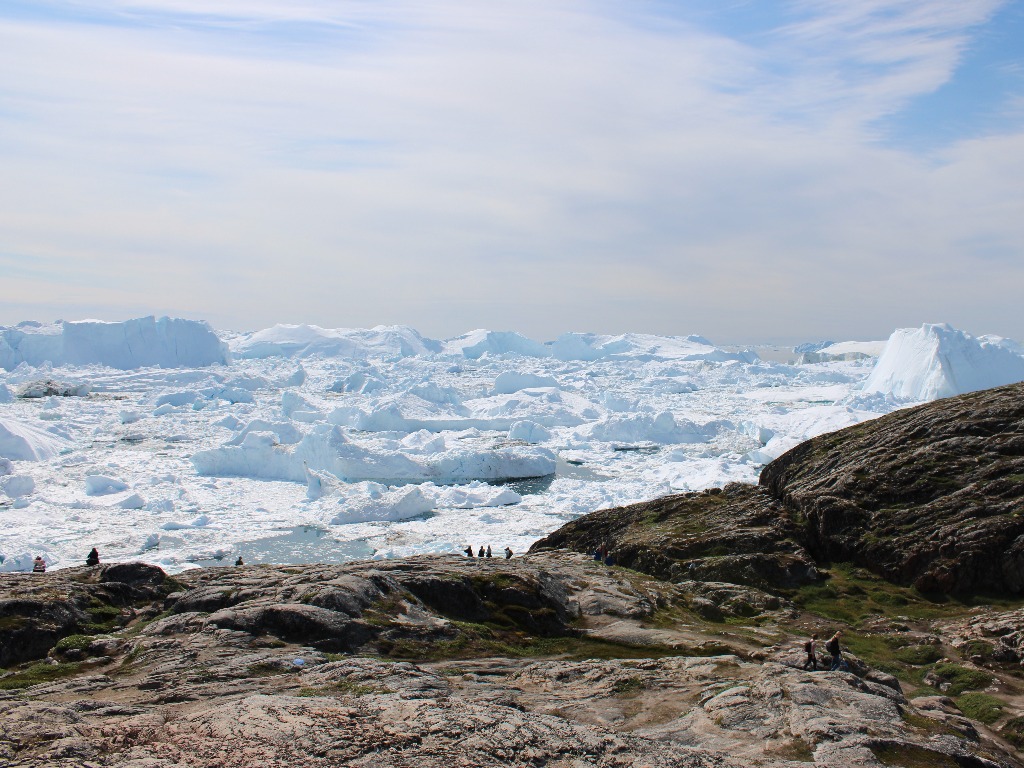

Discovering the Arctic
The 71-cabin National Geographic Resolution, which sails under luxury exploration cruise company Lindblad Expeditions, is like no other expedition ship in the water. You might find yourself in the Science Hub or in the Ice Lounge, listening to one of the many National Geographic experts on board giving a lecture or obliging questions about the daunting terrain.
I quickly settled into a routine: after a day exploring the natural beauty or visiting an Inuit settlement on the ship’s Zodiac boats, I would head to the Ice Lounge. There, I eagerly awaited National Geographic diver Pat Webster. One of the two divers accompanying us, Pat showed us videos of the diverse marine life encountered that day in the frigid Arctic waters. It was like watching our very own National Geographic documentary unfold before us in real time, and we were the stars of the plot.
After dinner, we typically found ourselves, cocktail in hand, enjoying the open Bridge, a section of the ship that offers a state-of-the-art command center with panoramic views, providing an unparalleled vantage point for navigating through some of the world’s most remote and breathtaking regions. There, we would see the captain, ice navigator, or first officers piloting the ship through the razor sharp ice fields and uncharted fjords in real-time. Initially, I felt like I was somewhere I shouldn’t be, but that feeling quickly faded as they engaged us, showed us the new equipment, and even let us sit in the captain’s chair.
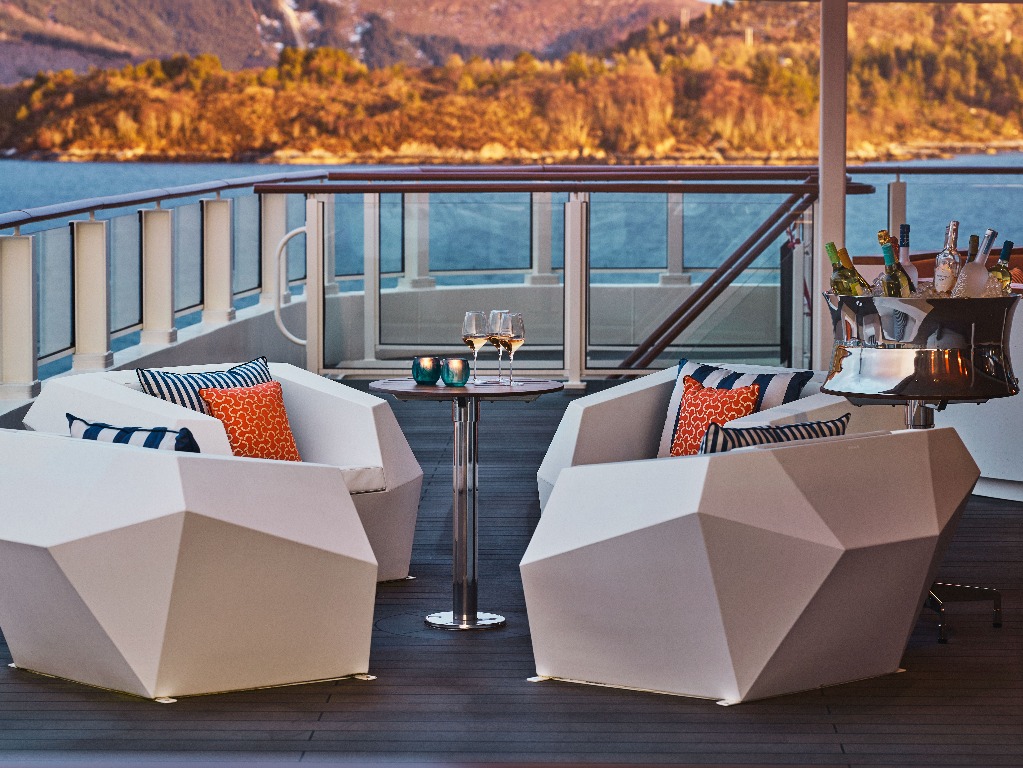
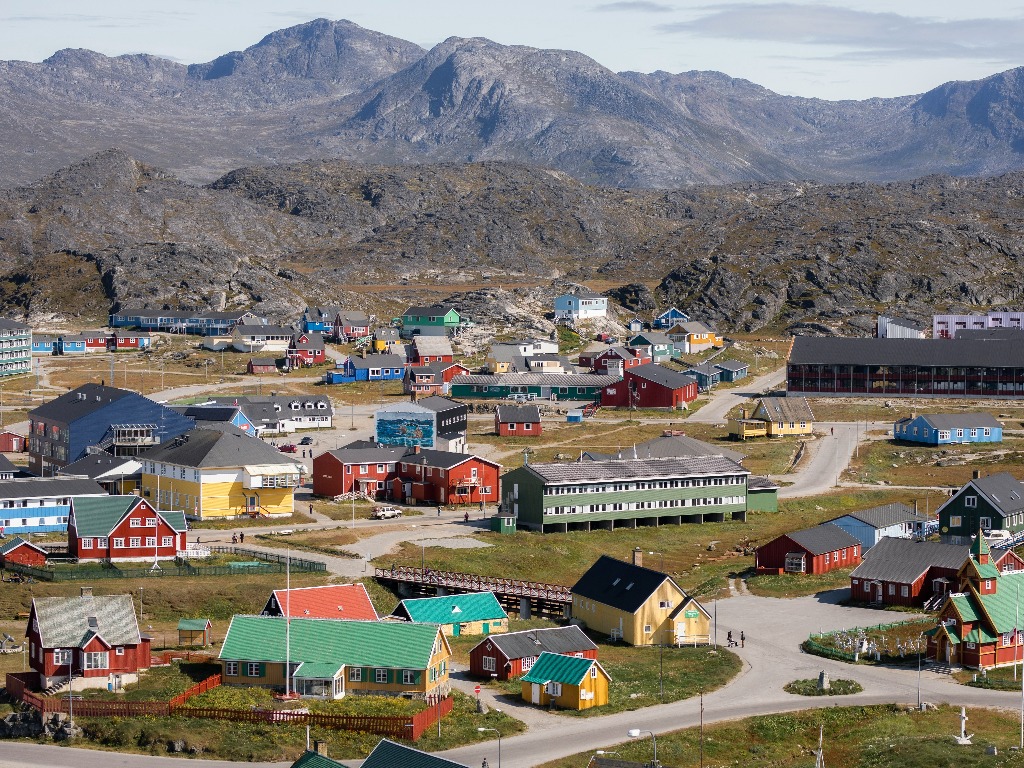
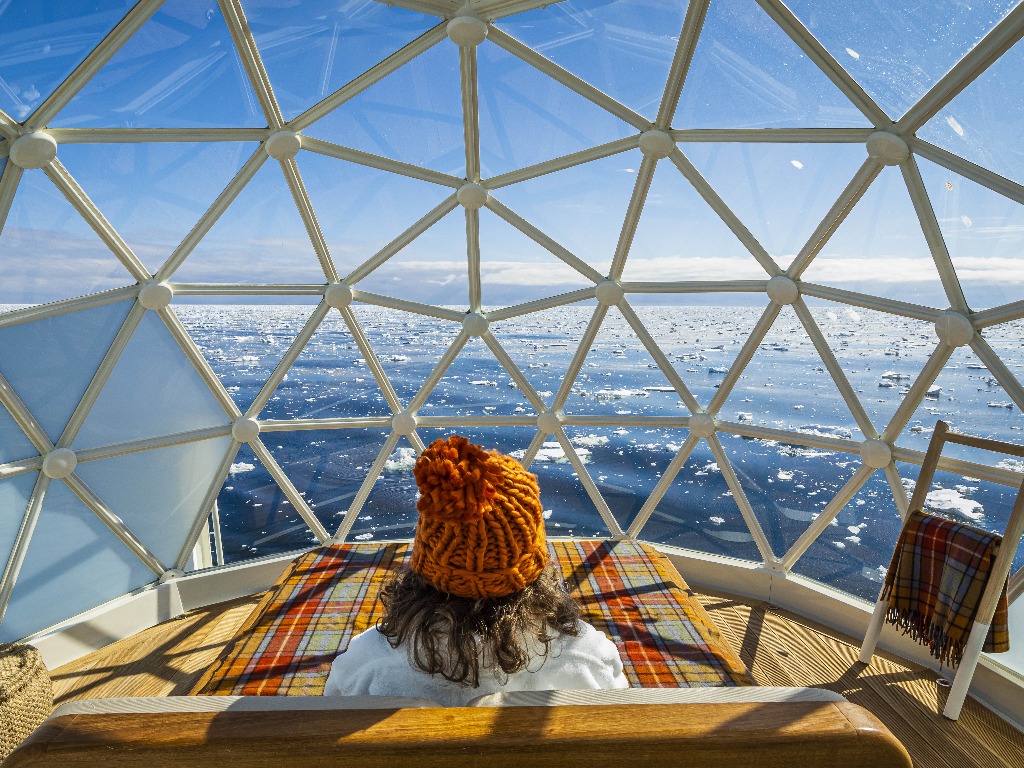
Guests crammed the Bridge upon a whale sighting. Reaching for their iPhones or DSLR cameras, it wasn’t uncommon for one of the National Geographic photographers would graciously offer tips on getting the perfect shot with whatever equipment we had. Phil Schermeister, an award-winning photographer and published author of multiple photography books, spent many moments lining up a magazine-worthy shot on my own phone.
As photographers and conservationists in the field, the passion they have for their line of work is contagious, and sure enough, after years of wanting to try my hand at using a DSLR, I found myself photographing everything from sled dogs to icebergs with a newfound confidence.
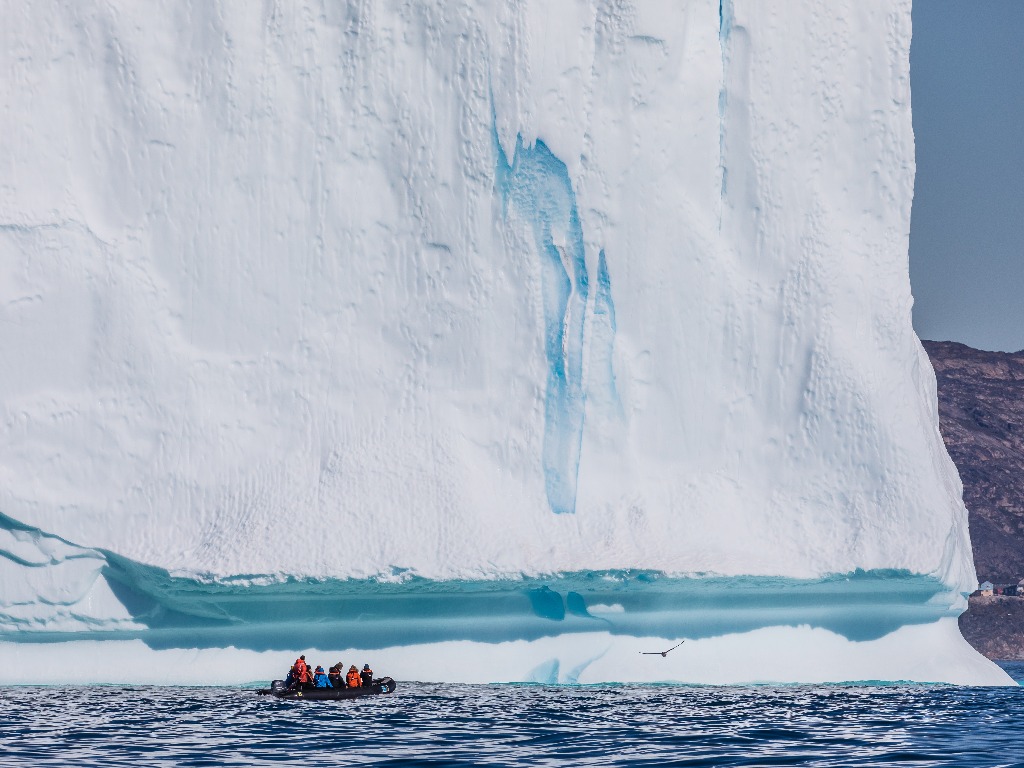
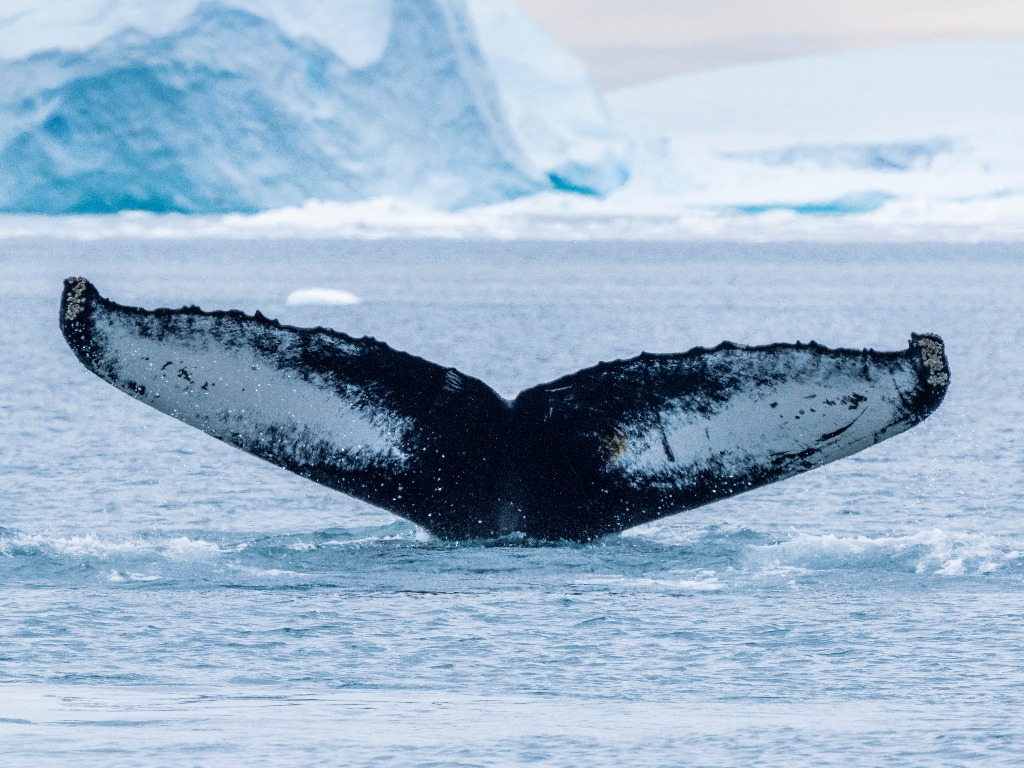
The expedition begins
Departing Kangerlussuaq we started our expedition. On either side of the ship, landscapes carved by glaciers adored the 190-kilometre fjord bearing the same name. We landed by Zodiac at an old whaling station, warmly met by our Greenlandic hosts.
Our tour began in Dog Town, observing sled dogs and their handlers. A sled trainer explained the dogs’ role in Arctic living while playful puppies distracted us. Later, we tasted a traditional muskox soup that rivaled my family’s own recipe of beef and barley version back home. In local shops, natural materials obtained through hunting had been carved by hands and heritage, their stories imparted by shopkeepers.
In the heart of Uummanaq, a prominent mountain stood overlooking the community. The ascent offered panoramic views of the town below, where houses painted bright shades of blue, yellow and red lined the coast – a nod to Greenland’s connection to Denmark. An afternoon excursion led us to Quilakitsoq’s archaeological site dating back to 1475 whose significance was shared by Lars, a local Greenlander Lindblad had hired for this particular voyage. He engaged us with Inuit storytelling and provided cultural insights into the artifacts we encountered.
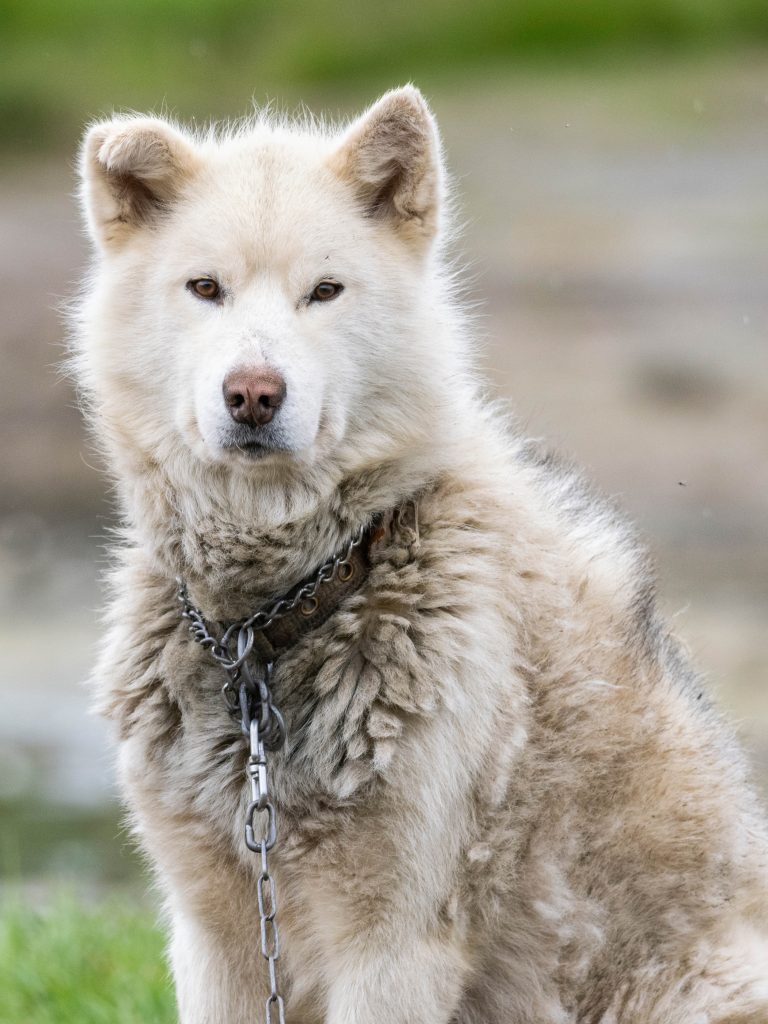
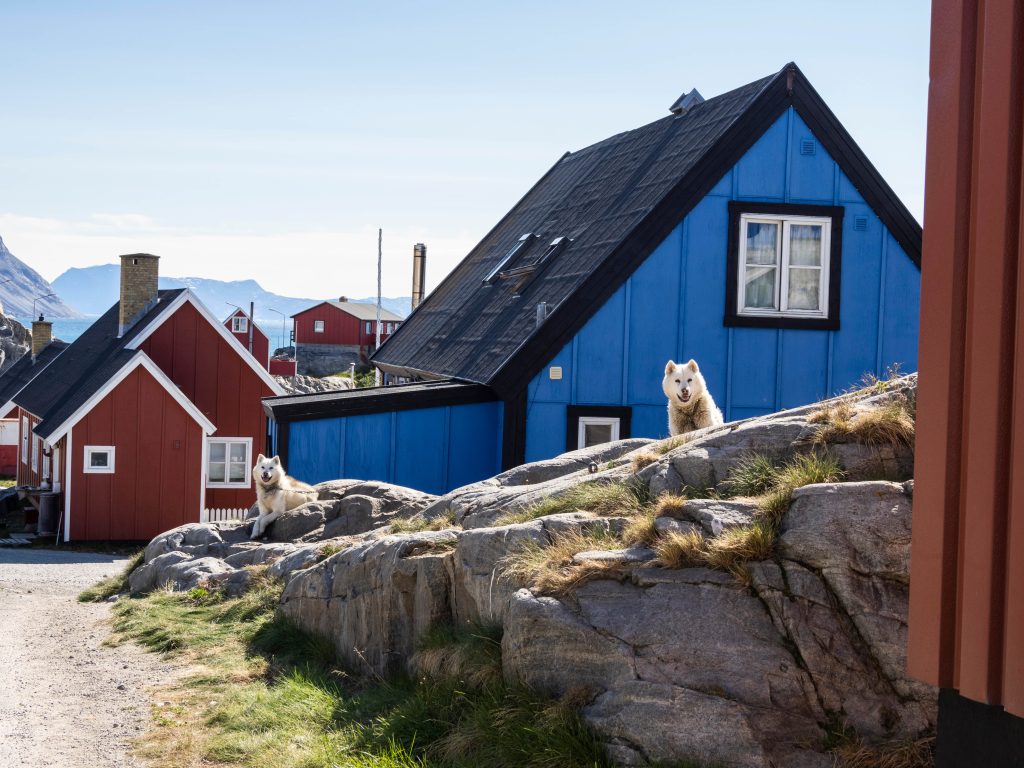
The ship navigated the icy Davis Strait towards the UNESCO-sheltered Ilulissat Icefjord. Here, we found local fishermen on the other end of our sailors hold, a symbolic nod to the strong partnership Lindblad maintains with the communities its itineraries visit. The fishermen guided us amongst massive icebergs and tranquil waters.
In Ilulissat, a hike took us into the icefjord where the view of green valleys filled with white flowers gave way to ice expanses—a juxtaposition of nature. A visit to the Ilulissat Icefjordscenter revealed historical scenes and arctic wildlife that were encased in clear sculptures resembling ice, a contemplative preservation of their way of life.
Upon my arrival back in Toronto, I switched my phone’s data back on for the first time since I had left and was immediately flooded with notifications, which made me miss the quietness of the Arctic.
Yet unexpectedly, the polar expedition had left an imprint on me that I didn’t foresee—I noticed myself walking a little more lightly, paying closer attention to my surroundings, and feeling an increased responsibility towards environmental stewardship. It made me wonder if this was National Geographic’s purpose in partnering with Lindblad.
Was it to reignite the curiosity we once felt as children watching their shows, and to instill a deeper sense of stewardship towards nature and each other?
—Story by Mitchell McClung




